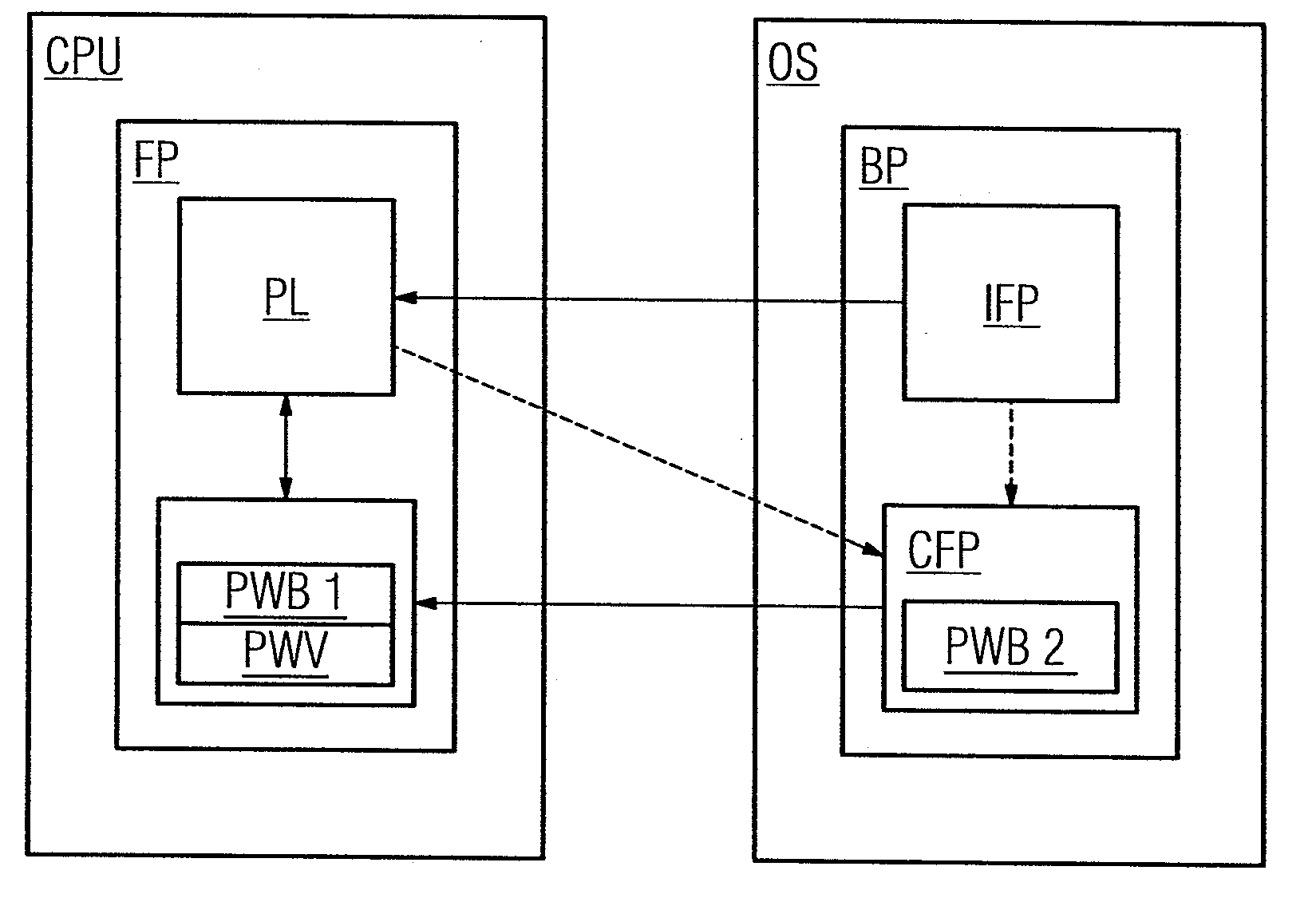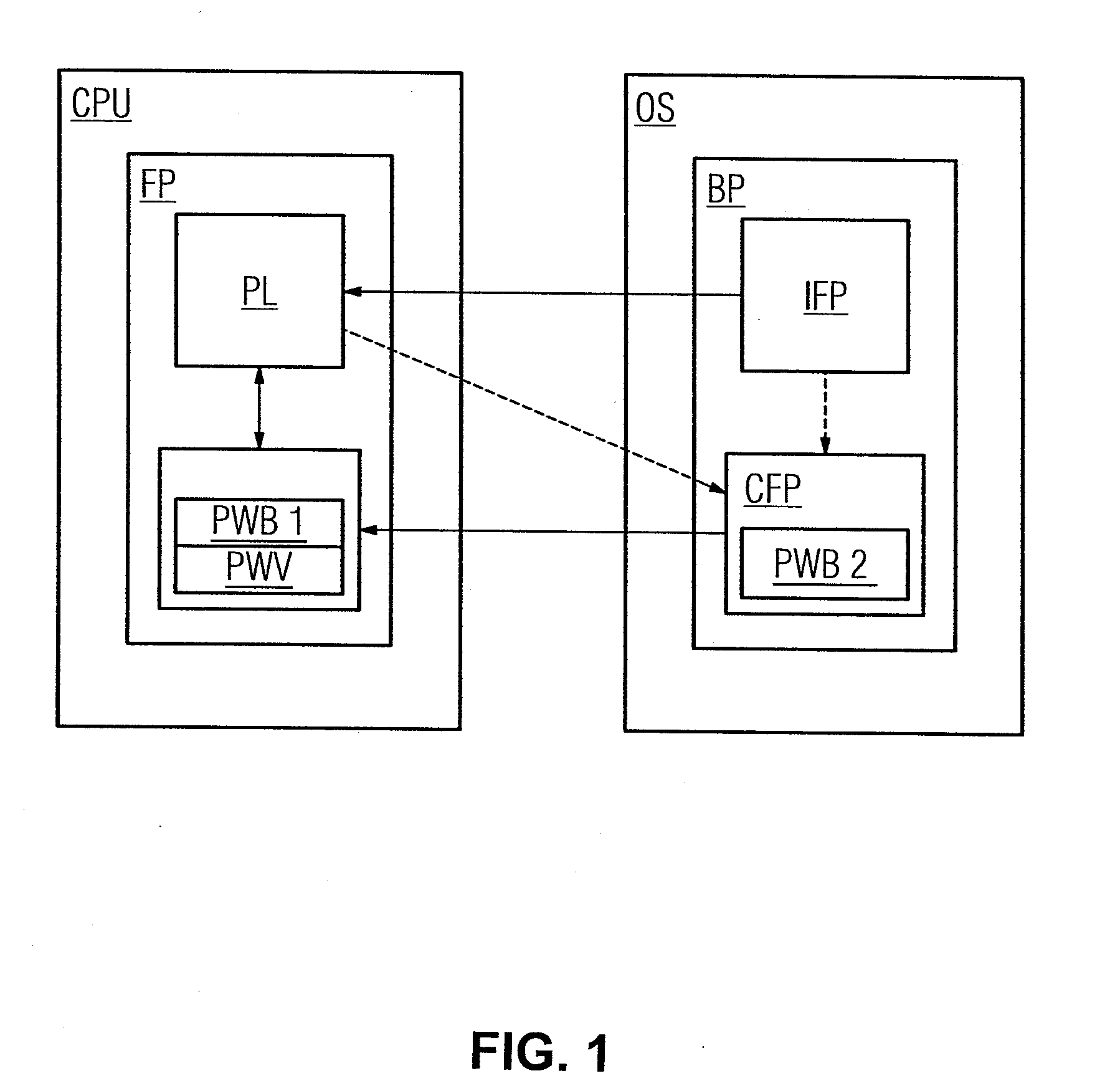Method and Controller for Controlling a Safety-Oriented Industrial Automation Component
- Summary
- Abstract
- Description
- Claims
- Application Information
AI Technical Summary
Benefits of technology
Problems solved by technology
Method used
Image
Examples
Embodiment Construction
[0019]FIG. 1 illustrates safety-oriented (“failsafe”) industrial automation component (CPU) connected to the controller Operation Station (OS) through an information network (not shown). The automation component (CPU) is provided with safety-oriented software Failsafe Program (FP) comprising a parameter list (PL). The parameter list (PL) comprises variables, constants or information relating to settings i.e., all information which is intended to be input, retrieved and changed by the controller (OS). In addition to the parameter list (PL), the safety-oriented software (FP) comprises a further function block with the modules (PWB1) test value calculation 1 and test value comparison (PWV). In the present exemplary embodiment, the controller (OS) is not or is not necessarily in the form of a safety-oriented component, i.e., in contrast to the automation component (CPU), no special measures with regard to failure safety, certification or redundancy have been taken or have to be taken. I...
PUM
 Login to View More
Login to View More Abstract
Description
Claims
Application Information
 Login to View More
Login to View More - R&D
- Intellectual Property
- Life Sciences
- Materials
- Tech Scout
- Unparalleled Data Quality
- Higher Quality Content
- 60% Fewer Hallucinations
Browse by: Latest US Patents, China's latest patents, Technical Efficacy Thesaurus, Application Domain, Technology Topic, Popular Technical Reports.
© 2025 PatSnap. All rights reserved.Legal|Privacy policy|Modern Slavery Act Transparency Statement|Sitemap|About US| Contact US: help@patsnap.com



